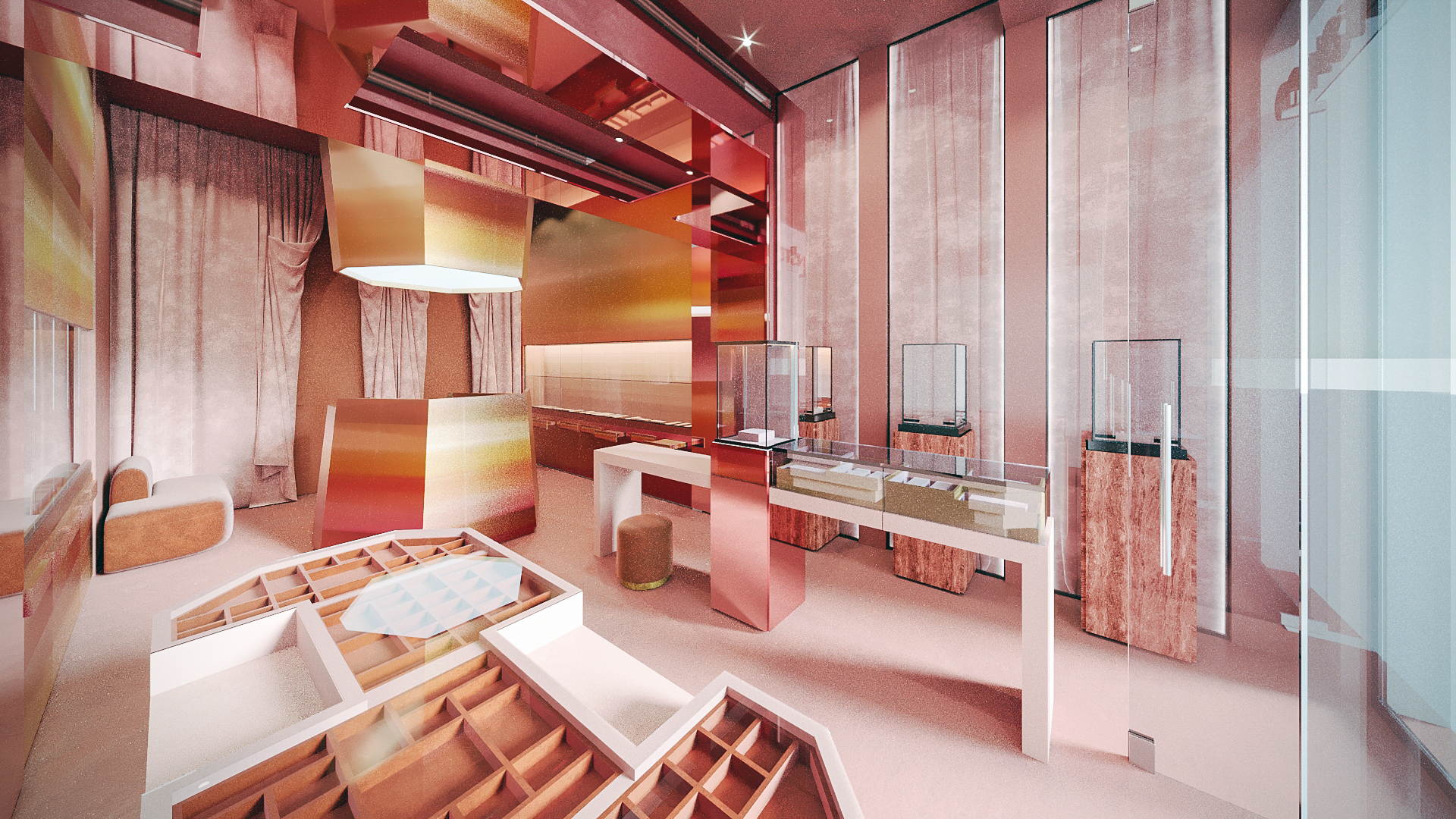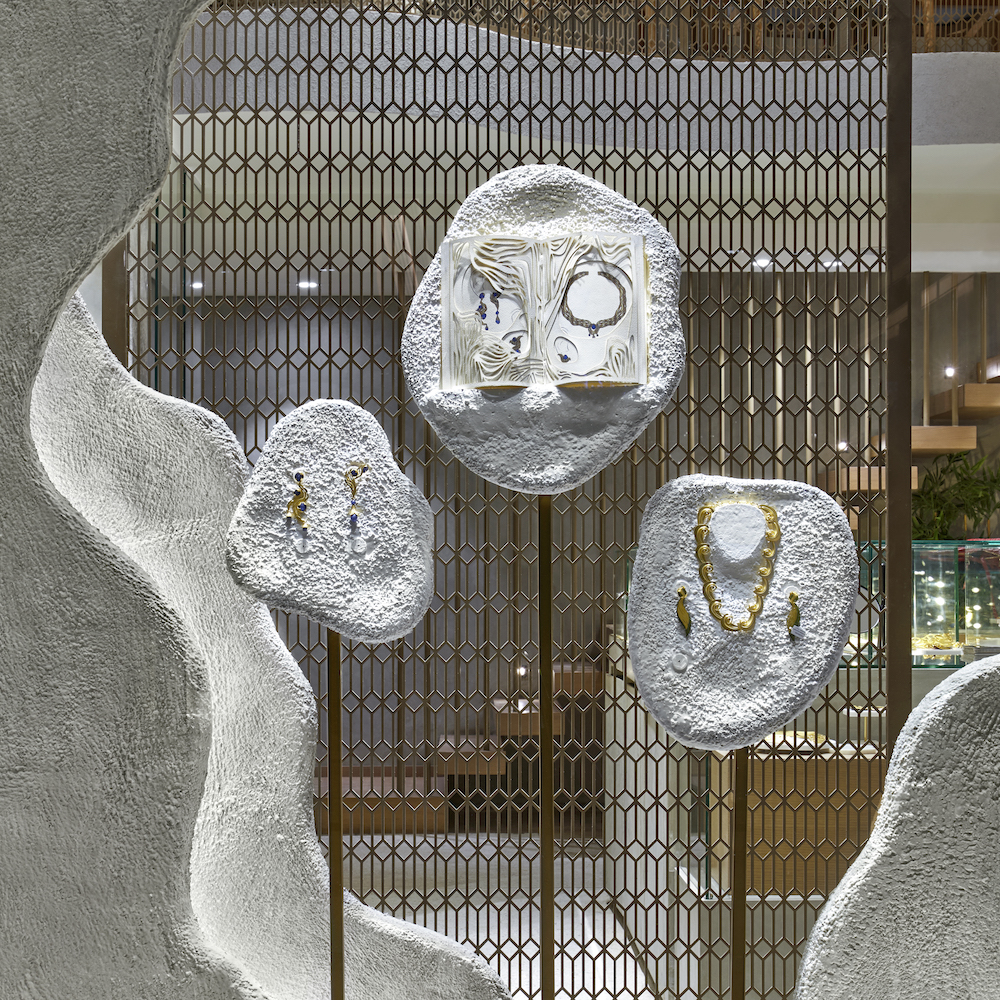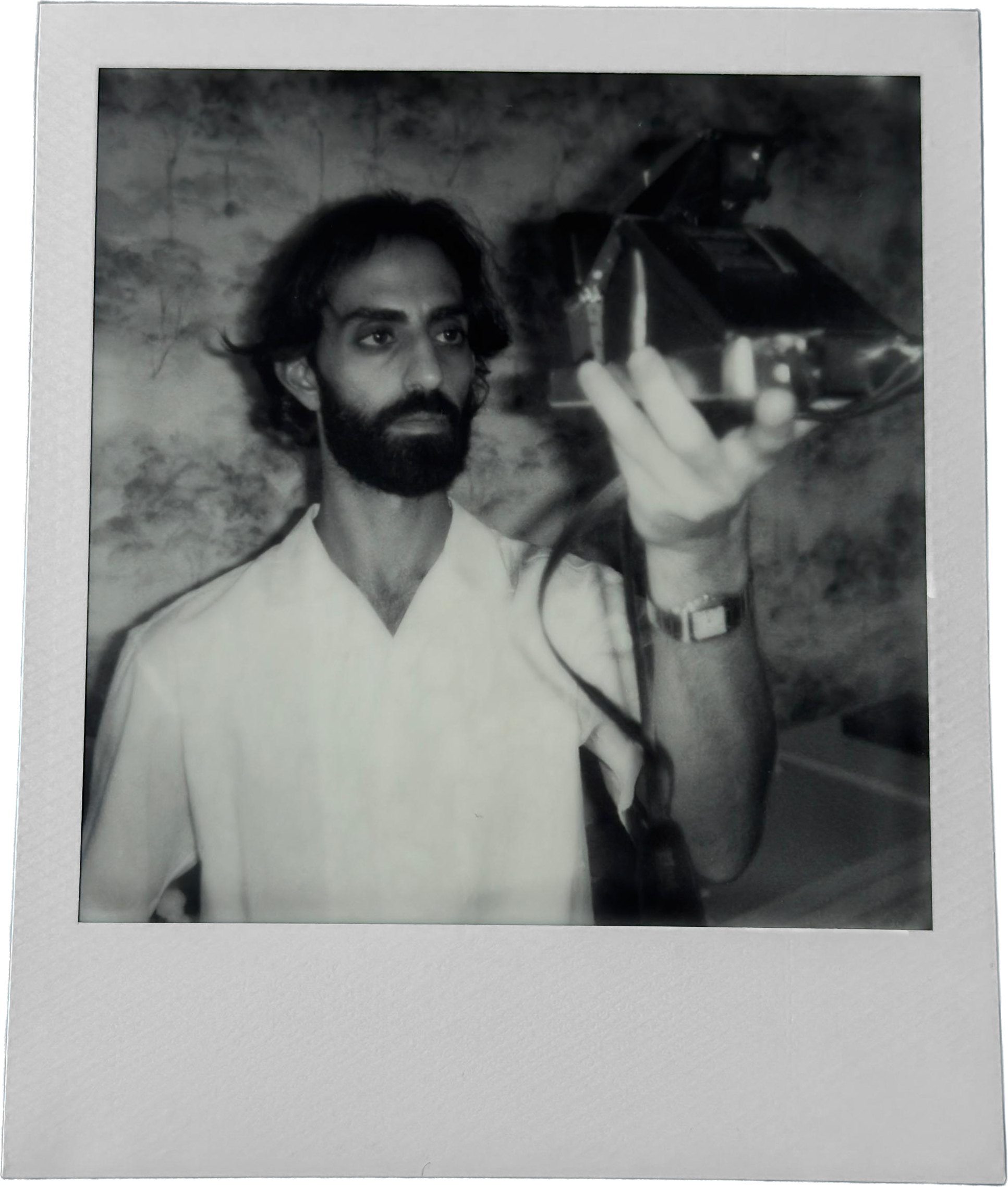From a curious eye for shop windows in London to shaping the spatial identity of Arab brands across Cairo and the Gulf, Zein Fahmy is quietly revolutionizing what retail means in the Middle East.
Through her boutique studio, Wonder Agency, she’s rejecting trend-chasing and fast visuals in favor of rooted storytelling, sensory precision, and craftsmanship with purpose. Vogue.com readers, meet the founder you need to watch.

“Retail brought together the pace of fashion and the structure of interiors—and unlike residential design, it was clear, concise, and fast,” says Zein Fahmy, founder of Wonder Agency. “You build a space, it lives, it speaks, and then you move on to the next story. That rhythm hooked me.”
It’s that rhythm—bold, thoughtful, always grounded—that has defined Wonder’s rise across Egypt and the GCC. Whether designing for heritage names like Azza Fahmy or crafting retail temples for up-and-coming Arab creatives, Fahmy is less interested in trend cycles and more in translating brand soul into space.
“I started to notice how much I was drawn to shop windows,” she says of her early days in London. “Not just the design, but the way they could tell an entire story in a single glance.” That fascination with spatial storytelling eventually shaped her agency’s ethos: retail not as a place to sell, but a canvas to express.
The Cairo Effect—Without the Clichés
Despite her Cairo roots, Fahmy resists being boxed into aesthetic expectations. “My visual language isn’t necessarily ‘Egyptian’ unless the project calls for it,” she explains. “But what Cairo, and Egypt more broadly, does offer is an unparalleled richness in craftsmanship.”
She speaks passionately about the artisans she collaborates with—woodworkers, leather makers, glassblowers—many with generational expertise. “The challenge is never the lack of skill—it’s about how to direct it, how to get what you really want out of these craftsmen, and that in itself becomes part of the creative process.”
What Fahmy brings to the table isn’t a fixed look, but cultural fluency. “When culture does play a role in our work, it’s not just visual—it’s about how people experience and perceive space,” she notes.

Anti-Pinterest, Pro-Purpose
While the world is trapped in infinite scrolls of visual mimicry, Fahmy is fiercely protective of originality. “You scroll, you save, you think you’re being original, but you’re really just remixing what’s already out there,” she warns.
Her process is rooted in discipline and depth. Sketching, material experimentation, and referencing art history and fashion archives are the studio’s daily bread. The team avoids looking at direct competitors, instead drawing influence from unexpected places—even food. “We’re here to create something rooted, not recycled.”
Design That Moves—and Moves You
At Wonder, the process starts with a spark. “Sometimes even a single material I want us to build around,” says Fahmy. That seed evolves through hands-on collaboration and pinboard storytelling before taking spatial form.
But while aesthetics are vital, flow and logic are non-negotiable. “If the spatial logic isn’t there—if the light, the mood, the product density aren’t considered—then it doesn’t matter how beautiful the store looks,” she says.
Retail, she insists, is its own language. “It’s about how the light hits the product, how the rails are merchandised, the psychology of flow, the way people shop.” It’s both science and theatre—and she knows how to direct both.

One Space, One Chapter—A Bigger Narrative
Fahmy is quick to call out overused buzzwords like “experience.” For her, the real work lies beyond the store. “It’s about how the brand shows up across every single touchpoint,” she says, citing Jacquemus as a masterclass in tonal cohesion across Instagram, physical space, and service design.
This is why Wonder often extends beyond its scope. “I’m often told, ‘Thank you for getting involved in things outside your scope,’ but honestly, I can’t help it,” she laughs. “Because I know what I do won’t matter unless the full story holds.”
Building for a Region Ready to Bloom
As Wonder expands into the Gulf, Fahmy is especially passionate about empowering regional designers. “The Arab world is going through such an exciting shift,” she says. “We’re seeing a new wave of Arab brands finally stepping into the spotlight.”
She adds, “I really believe that Arabs understand Arabs better than anyone else. We know the demographic details and the cultural nuances. So when a brand is just starting out, I want to meet them where they are, and still give them the tools to dream big.”
It’s this mixture of humility, hunger, and precision that’s allowed Fahmy to work with names like Emaar and Azza Fahmy while maintaining the same energy for rising creatives. “It doesn’t matter if it’s a massive name or a new brand—I go into each project with the same energy, because I know I’m about to enter unknown territory.”
The Future Is Visual (and Arab)
Looking ahead, Fahmy sees storytelling and spatial identity becoming more vital than ever—especially for Arab brands. “A well-designed retail space that’s rooted in storytelling and strategy doesn’t just look good—it drives sales. It builds trust. It builds brands that last.”
Her advice? Stop mimicking, start building. From sketch to spotlight, every corner matters.
“The space is just one chapter in a much bigger narrative,” she concludes. And Zein Fahmy? She’s writing it, beautifully.
Discover more on wearethewonder.com
.png)
.png)


.jpg)

.png)